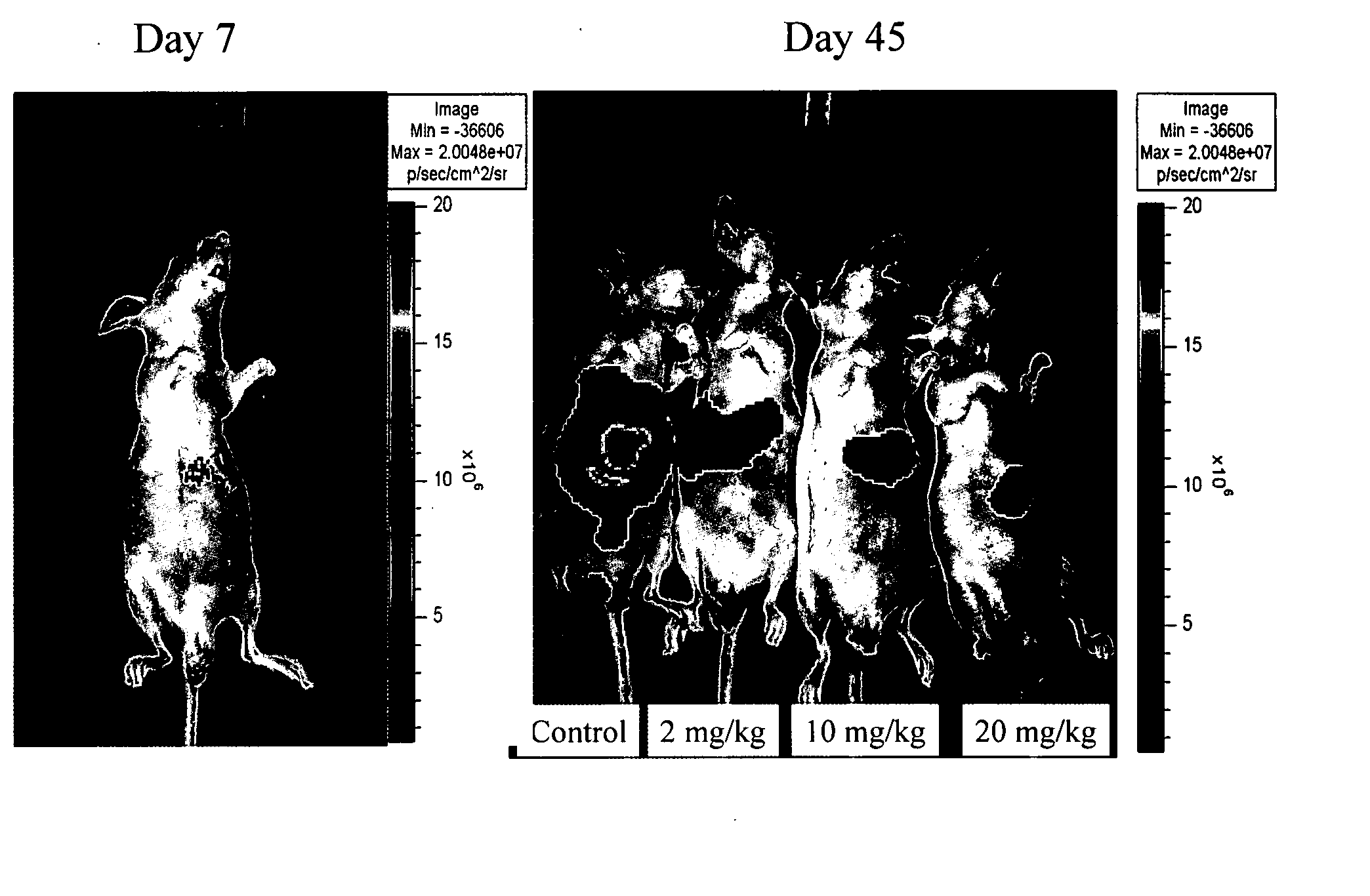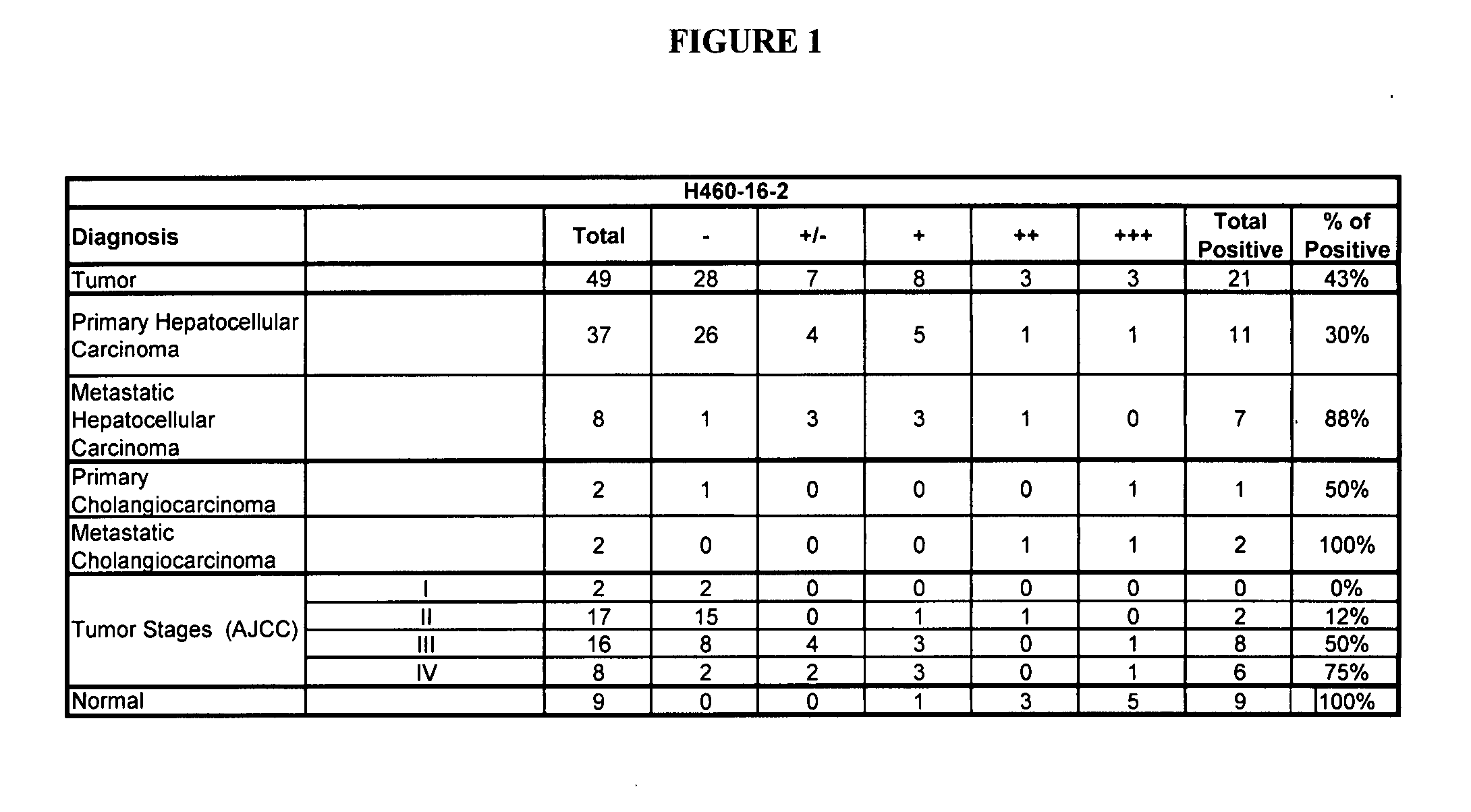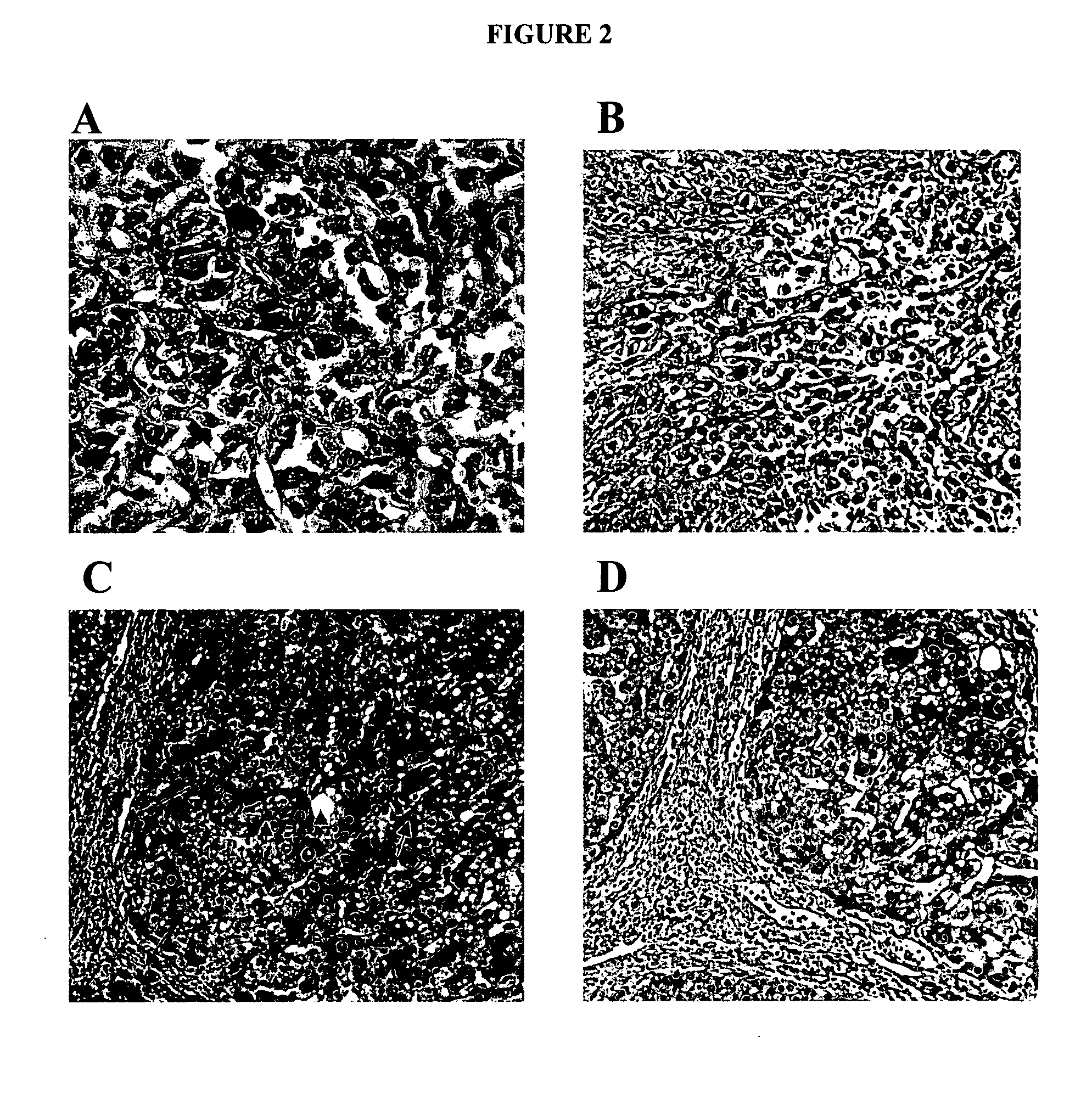Cytotoxicity mediation of cells evidencing surface expression of CD44
- Summary
- Abstract
- Description
- Claims
- Application Information
AI Technical Summary
Benefits of technology
Problems solved by technology
Method used
Image
Examples
example 1
Human Liver Tumor Tissue Staining
[0185] IHC studies were conducted to further evaluate the binding of H460-16-2 to human liver tumor tissue. IHC optimization studies were performed previously in order to determine the conditions for further experiments. H460-16-2 monoclonal antibodies were produced and purified as previously disclosed in Ser. No. 10 / 603,000.
[0186] Binding of antibodies to 49 human liver tumor and 9 normal liver tissues was performed using a human, liver normal and tumor tissue microarray (Imgenex, San Diego, Calif.). The following information was provided for each patient: age, sex, organ and diagnosis. Tissue sections were deparaffinized by drying in an oven at 58° C. for 1 hour and dewaxed by immersing in xylene 5 times for 4 minutes each in Coplin jars. Following treatment through a series of graded ethanol washes (100 percent-75 percent) the sections were re-hydrated in water. The slides were immersed in 10 mM citrate buffer at pH 6 (Dako, Toronto, Ontario) t...
example 2
Correlation of CD44 with Metastatic Potential of Various HCC Cell Lines
[0189] To further evaluate this correlation in vitro, six heptaocellular carcinoma (HCC) cell lines with various metastatic potential (Hep3B (American Type Culture Collection, Manassas, Va.), Huh-7 (a gift from Dr. H. Nakabayashi, Hokkaido University School of Medicine, Sapporo, Japan), PLC (Japanese Cancer Research Bank, Tokyo, Japan), MHCC-97L, MHCC-97H and HCCLM3 (Liver Cancer Institute, Fudan University, Shanghai, China)) were evaluated for CD44 expression by flow cytometry using (ch)ARH460-16-2-IgG1 antibody. To detect expression of CD44 in various HCC cell lines, cells were stained for 1 hour with (ch)ARH460-16-2-IgG1 or isotype control antibody (10 micrograms / mL) and 30 minutes with the appropriate secondary antibody and analyzed by FACS.
[0190] By flow cytometry, CD44 expression levels were found to be higher in the metastatic HCC cell lines (MHCC-97L, HCCLM3 and MHCC-97H) when compared with the primary...
example 3
Orthotopic HCC Tumor Model with HCCLM3 Cells
Luciferase Labeling of Cells
[0191] To further evaluate this correlation in vivo, (ch)ARH460-16-2-IgG1 was tested in an orthotopic HCC tumor model. For the luciferase labelling of HCCLM3 (a metastatic HCC cell line Yang et al., Cancer Genet. Cytogenet. 158(2):180-183 2005) cells, lentiviral vector harboring the luciferase gene was constructed and transfected into the cells using the method described previously (Cheung et al., Cancer Res. 66(8):4357-4367 2006). Stable transfectants were generated from a pool of greater than 20 positive clones (which were selected with blasticidin at a concentration of 2 micrograms / mL).
Animal CCD Experiments
[0192] One million HCCLM3 luciferase labeled cells were sub-cutaneously injected into the right flank of nude mice, which were then observed daily for signs of tumor development. Once the tumors reached 1 to 1.5 cm in diameter, it was removed and cut into about 1- to 2-mm cubes, which were then subs...
PUM
| Property | Measurement | Unit |
|---|---|---|
| Fraction | aaaaa | aaaaa |
| Fraction | aaaaa | aaaaa |
| Fraction | aaaaa | aaaaa |
Abstract
Description
Claims
Application Information
 Login to View More
Login to View More - R&D
- Intellectual Property
- Life Sciences
- Materials
- Tech Scout
- Unparalleled Data Quality
- Higher Quality Content
- 60% Fewer Hallucinations
Browse by: Latest US Patents, China's latest patents, Technical Efficacy Thesaurus, Application Domain, Technology Topic, Popular Technical Reports.
© 2025 PatSnap. All rights reserved.Legal|Privacy policy|Modern Slavery Act Transparency Statement|Sitemap|About US| Contact US: help@patsnap.com



